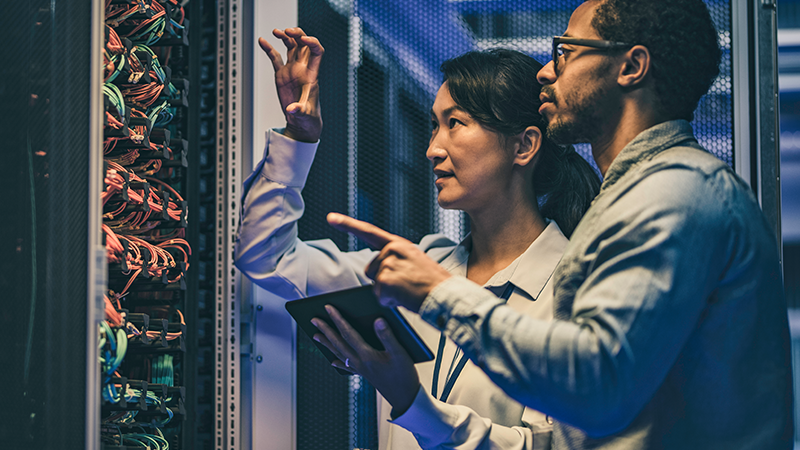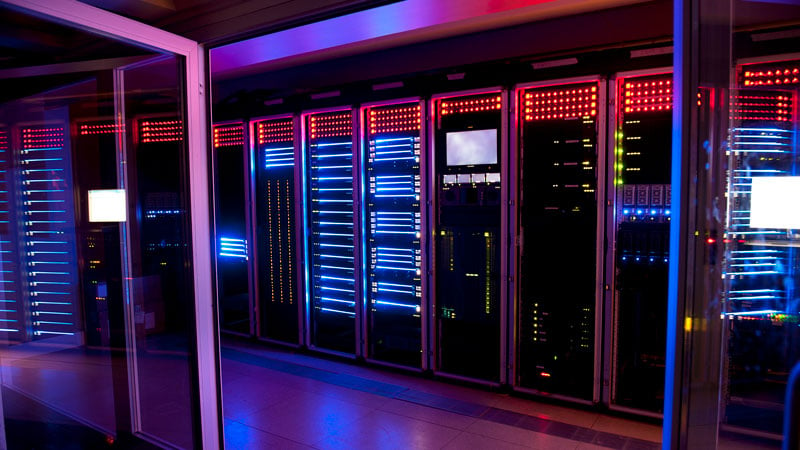Data Centers are the foundation of the economy and technological development. They are infrastructures that house large amounts of servers and electronic devices with the goal of processing and distributing data worldwide. However, the increasing use of data centers generates a growing demand for electrical energy.
According to the report from the UpTime Institute, server power consumption is experiencing a sharp upward trend. Data reveals that power consumption seldom exceeded 300 W by 2017 but it surged to nearly 800 W by 2022, which highlights the need to adopt more efficient and sustainable technologies such as liquid cooling, server virtualization, and the use of renewable energy sources to reduce their electricity consumption and environmental impact.
The Uptime’s Institute Capacity Trends Survey 2022 report shows that reducing energy consumption is increasingly becoming a priority, and Data Center providers are adopting more responsible policies regarding energy consumption. Some of them are implementing energy management strategies to reduce consumption and improve efficiency, such as monitoring loads, identifying hot spots, and implementing measures to alleviate them.
Challenges for Latin America
The Copenhagen Energy Efficiency Center, predicts that by 2030, ICT will account for more than 20% of global electricity demand. In addition, the high energy consumption of these infrastructures and the expected growth in the years to come underlines the importance of reducing data center energy waste.
An Arizton report predicts that the Latin American data center market will grow at a compound annual growth rate (CAGR) of over 6% from 2022 to 2027, and is expected to reach $1 billion by 2027, focusing on sustainability for critical mission center developers.
The challenge lies in improving the carbon footprint, sustainability reporting, and taking real action to reduce energy consumption and costs. This is due to the region's demand for energy services that could double in the next 20 years, according to the Inter-American Development Bank (IDB).
McKinsey identified four ways to reduce electricity consumption in data centers:
- Use artificial intelligence to detect equipment that is not in use and automatically turn it off without the need for human intervention.
- Use IoT to accurately read electricity consumption and identify consumption patterns over time.
- Perform structural and architectural transformations to migrate to cloud-based RAN systems
- Finally, seek renewable energy sources.
According to Octavio Delgado, CTO of Ingenium, data center developers are more aware of providing consultancy, engineering, construction, and operation of data centers with green approaches that promote an environmental evolution. "Highly trained teams in solutions that improve the energy efficiency and water consumption of the data center are key," he emphasized.
In this context, Ingenium in partnership with Vertiv aims to complement their technologies and knowledge to provide comprehensive solutions for sustainability and energy efficiency in data centers in the region. These data centers have various types of equipment, from data processing, security, network infrastructure to energy management and data storage. As the equipment ages, their energy consumption increases, resulting in higher costs.
To find out the energy consumption of your DC power backup system, you can estimate energy savings with Vertiv's G4 Energy Savings Calculator. This tool allows you to see how much energy it is possible to save by upgrading your existing DC power infrastructure with 98% efficient 3500-watt rectifiers from Vertiv.
A growing trend in the ICT industry is the adoption of modular data centers to reduce industrial impact on the environment. These prefabricated modular systems offer benefits such as reducing carbon emissions throughout the material production phase compared to an equivalent reinforced concrete structure, avoiding additional supplier deliveries, and eliminating waste.
Because these are integrated, closed systems, they can be engineered to eliminate waste –— material waste, as well as consumables such as energy and water –— and be more sustainable than a traditional data center design.

This article was a collaboration of Ingenium. Ingenium has more than 15 years of experience to accompany you on the path of decarbonization by adopting high-impact environmental practices and can guide you in the process of obtaining certifications such as CEEDA, LEED, and EDGE, among others.





